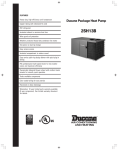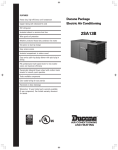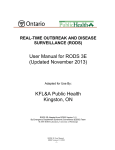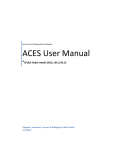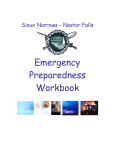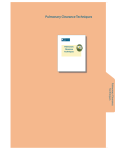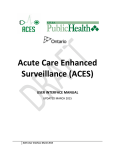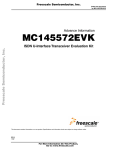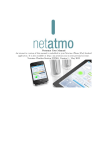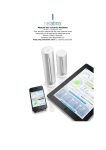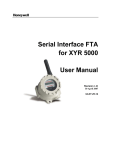Download User Manual for the GIS Portal at KFL&A Public Health: Version 1.0
Transcript
User Manual for the GIS Portal at KFL&A Public Health: Version 1.0 User Manual for the Public Health Information Management System (PHIMS), the Social Determinants of Health (SDOH) Mapper and the Tobacco Module Applications Nicole Andruszkiewicz MPH Candidate Kingston, Frontenac and Lennox & Addington Public Health August 2013 Table of Contents Overview ...................................................................................................................1 Vision .............................................................................................................................................. 1 Mission ............................................................................................................................................ 1 GIS and Public Health .................................................................................................................... 2 Units of Geography ......................................................................................................................... 2 Part 1: Public Health Information Management System (PHIMS)....................3 PHIMS User Interface .................................................................................................................... 3 Logging In ....................................................................................................................................... 3 Screen Navigation Area .................................................................................................................. 5 Layer List Tools .............................................................................................................................. 7 Public Health Information Tools .................................................................................................. 12 KFL&A Operational Activities Tools ........................................................................................... 23 Part 2: Social Determinants of Health (SDOH) Mapper ...................................28 SDOH Mapper User Interface ...................................................................................................... 28 SDOH Layers ................................................................................................................................ 29 Screen Navigation Area ................................................................................................................ 31 Population Summary Tool ............................................................................................................ 33 Part 3: Tobacco Module ...................................................................................................... 38 Tobacco Module User Interface ................................................................................................... 38 Screen Navigation Area ................................................................................................................ 40 Tobacco Tool ................................................................................................................................ 43 References ...............................................................................................................44 Contact Information ..............................................................................................46 Appendices ..............................................................................................................47 Appendix A Statistics Canada Hierarchy of Standard Geographic Units .................................... 47 Appendix B Table of Indicators for the INSPQ Deprivation Index .............................................. 48 Appendix C Table of Indicators for the Ontario Marginalization Index ...................................... 49 Appendix D Data Sources for GIS Applications ........................................................................... 50 Appendix E Scenarios Using the GIS Portal Layers .................................................................... 52 Overview There are three main Geographic Information System (GIS) applications being developed at Kingston, Frontenac and Lennox & Addington (KFL&A) Public Health which include the Public Health Information Management System (PHIMS), the Social Determinants of Health (SDOH) Mapper, and the Tobacco Module. PHIMS was developed by the Health Informatics team at KFL&A Public Health in 2011. Presently, PHIMS contains health data focused on environmental health and emergency preparedness. The SDOH Mapper consists of layers of information related to deprivation and marginalization across dissemination areas in Ontario. The Tobacco Module visualizes information related to health inspections of tobacco retailers in the KFL&A region. The health informatics team at KFL&A Public Health intend to combine these GIS applications into a single GIS portal with graduated levels of access and security depending on the user entering the portal. This user manual is divided into three main sections, with each section devoted to one of the GIS applications - PHIMS, the SDOH Mapper, and the Tobacco Module. Each section explains how to navigate the current user interface of the specified GIS application and describes how to use their various functions. Vision The public health informatics team at KFL&A Public Health is working to develop, in an ongoing systematic manner, a single access point to the GIS portal which will visualize multiple environmental and population based data sets in real time. The GIS portal will be used to provide public health situational awareness and assist with evidence informed decision making to protect the health of Ontarians. Mission The public health informatics team intends to provide available real-time data from multiple partners into the GIS portal in order to assist with identifying health events earlier than through traditional public health methods. The GIS portal aims to visualize environmental data with underlying population based indicators. This includes incorporating information related to vulnerable populations with the use of both age and social determinants of health data into the GIS portal. The social determinants of health data are derived from the Deprivation Index for Health developed by the Quebec Public Health Institute (INSPQ) and the Ontario Marginalization Index (ON-Marg) by the Centre for Research on Inner City Health. 1 GIS and Public Health In broad terms a Geographic Information System (GIS) is a technology that can display and examine spatial data. This is accomplished through the creation of computerized maps, graphs, and tables of geographic data to assist with identifying observations, trends, and relationships (Cromley & McLafferty, 2012). GIS therefore provides visual tools that can assist with problem solving and informing decision making. The increased uptake of GIS applications in public health in recent years is attributed to changes in technology and data sharing. Developments in hardware, software, and spatial databases have made GIS more affordable and user-friendly. This includes the development of electronic medical records which has led to increased data sharing between various agencies and research communities (Joyce, 2009). Units of Geography There are different units of geography which can be used to report data within a GIS application as identified in the figure from Statistics Canada in Appendix A. The GIS applications at KFL&A Public Health currently use dissemination areas which are the smallest geographic areas for which all census data are disseminated and have population sizes of 400-700 individuals (Matheson et al., 2011). The next largest unit of geography which dissemination areas are linked to are census tracts which comprise of areas with population sizes of 2,500-8,000 individuals. Dissemination areas are also linked to census subdivisions which are defined by municipalities and municipal equivalents such as Aboriginal Reserves or townships. These are followed by census divisions which are comprised of geographic areas that include counties or regional districts which are followed by provincial or territorial boundaries (Statistics Canada, 2013). For more information about the current research projects being developed by the public health informatics team at KFL&A Public Health and for links to additional resources go to www.kflaphi.ca. 2 Part 1: Public Health Information Management System (PHIMS) PHIMS User Interface PHIMS includes various tools related to environmental health and emergency preparedness. Specific tool functions include identifying extreme weather conditions and the locations of various public health services such as warm up centres. PHIMS Login Page To access PHIMS use the following website: http://www.phimskfla.appspot.com. On the login page (as shown in Figure 1) you will see an area to enter a UserID and a Password to gain entry into PHIMS. The current UserID is: ‘kfla’ and Password is: ‘qphi’. Figure 1: PHIMS Login Page 3 Main Screen Upon logging into PHIMS, you will see the main screen as shown in Figure 2. The main screen shows a gray scale basemap with a pan and zoom area on the left, a basemap selector on the top right corner, and a screen navigation area along the top portion of the basemap. Figure 2: PHIMS Main Screen 4 Pan and Zoom Area The pan and zoom functions allow you to change the view of the basemap with single-click actions. The circular pan function allows you to move the basemap by a fixed amount in the specified direction. The middle zoom function allows you to zoom in or out of the basemap by a fixed amount. The bottom rectangular pan function allows you to zoom into or out of a preselected area. Basemap Selector The basemap selector allows you to choose from nine different maps to use as your basemap. Each map identifies different geographic features such as topography, streets, or public venues. To select a map click once on the chosen map, then double click the top right corner of the map to display it as a basemap. Screen Navigation Area The PHIMS screen navigation area has nine main tools which include: Bookmarks, Draw and Measure, Print, Find Places, Layer List, Street View, Public Health Information, KFL&A Operational Activities, and Legend. Each tool is described in detail below. 1. Bookmarks The bookmarks function is the first tool from the left side of the toolbar. This function allows you to save an exact geographic area under a specified name that can be accessed upon your subsequent return to PHIMS. To use the bookmarks tool: 1) 2) 3) 4) Identify the geographic location you would like to save on the basemap. On the ‘add bookmark’ tab enter a name for your chosen geographic location. Click the ‘add bookmark’ button to save the chosen geographic location. To return to the bookmarked location upon your subsequent return to PHIMS, click on its specified name in the ‘bookmarks’ tab for the location to appear on the basemap. 5 2. Draw and Measure This tool (as shown in Figure 3) allows you to measure the distance between locations or to identify the perimeter and area units of a specified geographic location. To use the draw and measure function: 1) Select a shape from the draw tab. Multiple shapes, shape colours, and text sizes can be chosen. The ‘draw point’ shape allows you to place a point maker on a specific location. The ‘draw line’ and ‘draw freehand line’ shapes allow you to determine the distance between locations. All other shapes allow you to identify the area and perimeter units of a specified geographic location. 2) Select whether to show measurements on the measurements tab. Various distance and area units can be selected from the drop-down menus. 3) Click and drag the pointer over the desired geographic area on the basemap to draw the selected shape. Figure 3: PHIMS Draw and Measure Tool 6 3. Print The print tool allows you to print a screenshot of the basemap with a specified title and subtitle. 4. Find Places This tool can display a specified geographic location on the basemap by entering a specified address or geographic coordinates. 5. Layer List The layer list tool provides visualizations of health data related to demographics, environmental information, and Aboriginal Reserve locations. Refer to Appendix D for links to data sources for the layers in the layer list. These layers include: 1) Demographic layers related to age, deprivation, and marginalization. Age Layers: These include visualizations of seniors (65+ years of age) and children under five years of age across dissemination areas within Ontario (as shown in Figure 4) and are derived from the 2006 Census of Canada. Deprivation Layers: These include social and material deprivation layers and are obtained from the Deprivation Index for Health developed by the Quebec Public Health Institute (INSPQ). Social and material deprivation information is acquired from 6 main indicators from the 2001 Census of Canada. Refer to Appendix B for a description of the indicators that make up the deprivation layers. The table identifies that material deprivation is associated with differences in education, income, and employment while social deprivation is prevalent among those who live alone, live in single-parent families, and are separated, divorced, or widowed (Pampalon et al., 2009). Marginalization Layers: These layers include residential instability, material deprivation, ethnic concentration, and dependency which are derived from the Ontario Marginalization Index (ON-Marg). These four dimensions were created based on 18 indicators reflecting inequality and marginalization in Canada from both the 2001 and 2006 Census of Canada. Refer to Appendix C for a table describing the various marginalization layers. The table identifies that residential instability is based on seven indicators related to place of residence, number of household dwellers, and marital status. Material deprivation has six indicators related to education, single-parent families, income, employment, and housing conditions. Dependency has three main indicators which includes the proportion of the population that is aged 65+, a reverse coded indicator for the proportion of the population that is aged 15+ and not participating in the labour force, as well as a dependency ratio indicator which is the total population aged 0-14 and those aged 65+ divided by the total population aged 15-64. Ethnic concentration has two indicators related to immigration status and identifying as a visible minority (Matheson et al., 2011). 7 The data for the demographic layers are sorted into colour coded quintiles which can be identified in the legend. The quintiles for the marginalization and deprivation indices range from 1 (least unstable) to 5 (most unstable) with each quintile containing dissemination areas that make up approximately 20% of the population in Ontario. For instance, a dissemination area with a social deprivation ranking of 1 on the quintile scale indicates that the dissemination area is in the least socially deprived 20% of areas in the province. Figure 4: PHIMS Children Under Five Years of Age Layer 8 2) Environmental layers related to weather radar data, weather conditions, stream gauges, and heat information. Weather Radar Layer: This layer identifies cloud and precipitation data for Ontario and is obtained from Environment Canada’s National Climate Data and Information Archive. Weather Layer: This layer shows local weather conditions across Ontario by displaying visualizations of precipitation and cloud coverage occurring in various cities across the province. Stream Gauge Layer: This layer identifies the locations of stream gauges across Canada and the measurements of bodies of water. The data is obtained from Environment Canada and the Water Survey of Canada. Real-Time Heat Layer: This layer includes the locations of 12 Wet Bulb Globe Temperature (WBGT) sensors across four health units in Ontario as identified in Figure 5. The WBGT sensors examine heat stress by taking into account factors such as ambient air temperature, wind, and cloud cover (NOAA, 2011). 9 Figure 5: PHIMS Real-Time WBGT Sensors Layer 10 3) Aboriginal Reserve Layer: This layer (as shown in Figure 6) identifies the locations of Aboriginal Reserves across Canada with data obtained from Statistics Canada. Figure 6: PHIMS Aboriginal Reserves Layer In order to use the layer list function: 1) Check the box next to the chosen layer you would like to display on the basemap. 2) Click on the triangle to the left of the layer selected for a drop-down list of specific layer options. 3) If applicable, repeat steps 1 and 2 until no more drop-down lists are available and a final layer is chosen. 4) If applicable, once a final layer is chosen, the colour coded quintiles and their percentile ranges will appear on the legend. 5) Reveal one layer at a time for appropriate visualizations, although multiple layers can be selected simultaneously by checking their equivalent check boxes. 6) The transparency of each layer can be adjusted by using the slide bar next to the selected layers. 11 6. Street View This tool allows you to view a selected geographic location on the basemap through street level imagery from external websites which include Bing Maps and Google Maps. The various functions of this tool are currently under development. 7. Public Health This function consists of 11 different layers which visualize pertinent public health data. Refer to Appendix D for links to data sources for the layers described and Appendix E for scenarios using the PHIMS public health layers. These layers include: 1) Forest Fires: This layer can display the status of various forest fires occurring in Ontario. As shown in Figure 7, the forest fires are classified into five main categories. A fire that is defined as ‘under control’ means that it has been established that the fire will no longer spread. A forest fire is classified as ‘not under control’ during the period prior to any attempt to prevent the spread of the fire. For a fire to be defined as ‘being observed’ means that the spread of the fire is not currently being prevented. A fire is ‘being held’ when it is probable that the fire will no longer spread but efforts are made to manage the fire (MNR, 2009). Each of these five classifications of forest fires can be displayed on the basemap separately by checking their equivalent check boxes or they can be viewed simultaneously by checking the box to the left of the ‘all’ option. 12 Figure 7: PHIMS Forest Fires Layer 13 2) Wildfire Smoke Forecasts for Eastern Canada: This layer displays hourly forecasts of smoke from wildfires in Eastern Canada. Smoke levels are colour coded based on concentrations of particulate matter that are 2.5 micrometres or smaller in diameter (PM2.5). Small particulate matter can be lodged in the lungs and lead to respiratory and cardiac problems (B.C Air Quality, 2013). The layer can display the wildfire smoke forecasts for up to two days into the future. 3) Well Water Uranium: This layer identifies the levels of uranium in well water across Ontario. The information displayed for each well includes the concentration of micrograms of uranium per litre of water, the well depth, and the date the well water was last sampled. The layer also allows you to search for wells containing a specified concentration of uranium under the ‘filter results’ tab to the left of the ‘show all’ tab as shown in Figure 8. The current maximum acceptable concentration of uranium levels in drinking water in Canada is 0.02 milligrams or 20 micrograms per litre of water. Long-term exposure to high levels of uranium in drinking water can lead to negative health effects such as damage to kidney cells (Health Canada, 2011). Clicking on a well name in the list allows you to zoom in on the well’s location on the basemap. Figure 8: PHIMS Well Water Uranium Layer 14 4) Nuclear Stations: This layer identifies the locations of various nuclear reactor stations in both Canada and the United States. The layer identifies four nuclear power plants in Ontario and six across Michigan, New York, and Ohio. This layer is useful for emergency preparedness purposes as it has the ability to visualize three main geographical zones surrounding a nuclear station to use while planning a nuclear emergency as shown in Figure 9. The size of each of these zones can be modified to identify at risk populations. The contiguous zone is the area closest to the nuclear reactor where the primary evacuations occur due to the area’s proximity to the nuclear power plant. The primary zone is the area around the nuclear power plant where measures are taken to avoid exposure to radioactive plume. The secondary zone is the largest area around the nuclear power plant where steps are taken to avoid ingestion of radioactive matter (MCSCS, 2009). The nuclear stations layer in PHIMS also has the ability to identify at risk populations under the ‘at risk tab’ to the right of the ‘zones tab’ with data from the 2006 Census of Canada. The at risk population estimates will be updated with the most recent Census of Canada data when it becomes available. Figure 9: PHIMS Nuclear Stations Layer 15 5) Earthquakes: This layer shows information related to earthquakes that have occurred around the world in the past week. The layer identifies the locations of earthquakes, the magnitude of the earthquakes, as well as the date and time the earthquakes occurred as shown in Figure 10. Earthquake magnitude is most commonly measured using the Moment Magnitude Scale (MMS) which measures the size of the earthquake based on the energy released. Earthquakes with a magnitude under 3.0 are classified as small earthquakes, earthquakes with a magnitude ranging from 3.0-7.0 are medium sized, and those with a magnitude rating of 7.0 and greater are large earthquakes (USGS, 2012). Clicking on a specific earthquake in the list zooms into the location of the earthquake on the basemap. The main goal for this tool is to have alerts for earthquakes occurring in Ontario and earthquakes occurring in close proximity to nuclear stations. More specific details regarding the chosen earthquake can be found by following the link provided to the United States Geology Survey. Figure 10: PHIMS Earthquake Layer 16 6) Air Quality Index (AQI): This layer shows the AQI for cities in Ontario which was created by the Ministry of Environment (MOE) to inform the public on air quality based on levels of ambient air pollution as shown in Figure 11. This layer is useful as it identifies sensor data in real-time from the MOE. The AQI is measured approximately every hour in cities across Ontario and designates a score for air quality which ranges from 0 to 100+. The index is calculated by first assigning scores to various air pollutants based on their concentration levels. These air pollutants include fine particulate matter (PM2.5), ozone (O3), sulphur dioxide (SO2), nitrogen dioxide (NO2), carbon monoxide (CO), and total reduced sulphur (TRS). The score for the highest ranking pollutant is used as the final AQI score for the specified location and time period (Chen & Copes, 2013). As identified in the ‘legend tab’ in Figure 9, scores are categorized as follows: 0-15 indicate very good air quality, 16-31 indicate good air quality, 32-49 indicate moderate air quality, 50-99 indicate poor air quality, and 100+ indicate very poor air quality. The ‘symbols’ tab allows you to change the shape of the symbol used to mark the various locations where the AQI is identified. Hovering the cursor over one of the symbols on the basemap allows you to view the AQI score for the chosen location as well as the date and time the AQI was last measured. A symbol will begin to flash if there is a change in its AQI score. The layer also identifies whether the AQI for a particular area is increasing, remaining stagnant, or decreasing with colour coded triangles. 17 Figure 11: PHIMS AQI Layer 18 7) Air Quality Health Index (AQHI): This layer identifies the AQHI for cities in Ontario and Manitoba as shown in Figure 12. The AQHI was developed by Environment Canada to inform the public about health risks associated with air pollution. The AQHI is measured across Canadian cities using a scale from 1 to 10+. Scores which range from 1-3 indicate a low health risk, 4-6 indicate a moderate health risk, 7-10 indicate a high health risk, and 10+ indicate a very high health risk. The index is calculated using a formula to determine the “daily change in mortality risk” based on three main air pollutants known to be detrimental to human health (Environment Canada, 2013). These pollutants include fine particulate matter (PM2.5), ozone (O3), and nitrogen dioxide (NO2). The resulting index score is combined with specific health messages related to outdoor activity for both the general public and at risk populations. Hovering the cursor over one of the symbols on the basemap allows you to view the AQHI score for the chosen location as well as the date and time the AQHI was last measured. The colour coded triangle indicates whether a location’s AQHI score is increasing, decreasing, or remaining stagnate. A location’s symbol on the basemap will begin to flash to indicate a change in its AQHI score. Figure 12: PHIMS AQHI Layer 19 8) U.S Weather Service and Canadian Weather Service: These two layers identify weather information obtained from weather sensors across locations in Canada and the United States. Both of the layers have a ‘legend’ tab which describes the symbols used. The arrow symbol faces the direction in which the wind is travelling and the length of the arrow symbol signifies the force of the wind with a longer arrow indicating a stronger wind. The colour coded triangles to the right of the arrow symbol identify whether the temperature is remaining stagnant, increasing, or decreasing. The ‘symbol’ tab allows you to change the shape of the symbol that marks the locations of the weather sensors on the basemap and the ‘colour’ tab allows you to change the colour of these symbols. As shown in Figure 13, hovering the cursor over a chosen weather sensor on the basemap allows you to identify detailed weather information for the specified location. This information includes the current temperature, humidity, visibility, wind direction, wind speed, air pressure, dew point, time weather measurements were taken, and the temperature from the preceding measurement. A symbol on the basemap will momentarily flash to indicate that a change in weather conditions such as temperature or wind direction for that area has occurred. Figure 13: PHIMS U.S Weather Service Layer 20 9) Plume Dispersion: This layer as shown in Figure 14 allows you to visualize a simulated dispersion of air pollutants or toxins into the atmosphere due to factors such as a chemical spill from an industrial plant. To use the plume dispersion tool: 1) Specify where the plume dispersion occurs by clicking on the location on the basemap. It is also possible to identify the location of the plume dispersion by checking the box labelled as ‘use coordinates’ and entering the location’s coordinates into the boxes labelled as ‘longitude’ and ‘latitude’. To ensure that the coordinates entered are correct, click ‘validate’ for the location to be identified with a cross symbol on the basemap. 2) To define the plume dispersion, values must be entered into the fields marked with a red asterisk. These include the ‘emission rate (grams/second)’, the ‘release height (metres)’, and the ‘wind speed (km/h)’. 3) Other optional variables that can be defined for the plume dispersion are the ‘wind direction (degrees)’, ‘use wind sensors’, and the ‘number of sensors’. 4) Upon entering the values into their appropriate fields, click ‘draw’ to display the plume dispersion on the basemap. Figure 14: PHIMS Plume Dispersion Layer 21 10) Routing/Evacuation: This layer allows you to create a travel route between two specified locations with the use of vehicle transportation as identified in Figure 15. The tool has some limitations since it does not include information related to traffic flow, weather conditions, or road accidents. To use this tool: 1) Under the ‘route’ tab click the ‘select origin’ button. 2) Click the location on the basemap where you would like the travel route to begin. The longitude and latitude coordinates of your location should automatically appear in their labelled boxes along the left side of the ‘route’ tab. A red square outlined in green will appear on your specified location on the basemap. 3) Click the ‘select destination’ button. 4) Click the location on the basemap where you would like the travel route to end. The longitude and latitude coordinates of your location should automatically appear in their labelled boxes along the right side of the ‘route’ tab. A blue circle outlined in red will appear on your specified location on the basemap. 5) Select the ‘distance’ option for a travel route that has the shortest course or the ‘time’ option for a travel route that is the most time efficient. 6) Click the solve button for a travel route outlined in red from your origin to your destination to appear on the basemap. 7) Click the ‘directions’ tab to find detailed travel route directions including the total distance and time travelled. Figure 15: PHIMS Routing/Evacuation Layer 22 8. KFL&A Operational Activities This function consists of five different layers related to KFL&A Public Health operational activities. 1) Immunization Clinics: This layer identifies (as shown in Figure 16) the locations of clinics within the KFL&A Public Health region that offer free seasonal influenza vaccinations to the general public during specific periods throughout the year. Figure 16: PHIMS Immunization Clinics Layer 23 2) Cool Down Centres: This layer identifies air conditioned locations within the KFL&A Public Health region (as identified in Figure 17) that are open to the general public for respite from extreme heat and humid weather. Figure 17: PHIMS Cool Down Centres Layer 24 3) Warm Up Places: This layer (as shown in Figure 18) identifies the locations of centres in the KFL&A Public Health region that the general public can access for relief from extreme cold weather conditions. Figure 18: PHIMS Warm Up Places Layer 25 4) Tap into Kingston: This layer (as shown in Figure 19) identifies the locations of businesses and restaurants in the city of Kingston that offer free tap water to the general public in order to promote an accessible alterative to bottled water and soft drinks. Figure 19: PHIMS Tap into Kingston Layer 26 5) Traffic Cameras: This layer identifies the locations of traffic cameras across Ontario as shown in Figure 20. Figure 20: PHIMS Traffic Control Layer 9. Legend This tool allows you to identify the colour coded quintiles for the marginalization and deprivation layers in the layer list function. 27 Part 2: Social Determinants of Health (SDOH) Mapper SDOH Mapper User Interface The SDOH Mapper visualizes data related to marginalization and deprivation within the province of Ontario. Marginalization data is obtained from the Ontario Marginalization Index (On-Marg) and deprivation data is obtained from the Deprivation Index for Health developed by the Quebec Public Health Institute (INSPQ) (Matheson et al., 2011; Pampalon et al., 2009). Main Screen To access the SDOH Mapper use the following website: http://www.kflaphi.ca/sdoh/. You will be directed to the main screen of the SDOH Mapper as identified in Figure 21. The main screen shows a topographic basemap with a pan and zoom area on the left, the basemap selector in the top right corner, a list of the SDOH layers to the left of the basemap selector, and a screen navigation area along the top portion of the basemap. The ‘more information’ box along the right side of the basemap indicates that clicking on a geographic area within Ontario will display marginalization and deprivation scores for the closest dissemination area. Figure 21: SDOH Mapper Main Screen 28 Pan and Zoom Area The pan and zoom functions allow you to change the view of the basemap with single-click actions. The circular pan function allows you to move the basemap by a fixed amount in a specified direction. The middle zoom function allows you to zoom in or out of the basemap by a fixed amount. The bottom rectangular pan function allows you to zoom into or out of a pre-selected area. Basemap Selector The basemap selector allows you to choose from nine different maps to use as your basemap. Each map identifies different geographic features such as topography, streets, or public venues. SDOH Layers This function gives you access to seven layers which identify deprivation and marginalization information for dissemination areas across Ontario as shown in Figure 22. Deprivation layers are derived from the Deprivation Index of Health by the Quebec Public Health Institute (INSPQ). The deprivation layers include social deprivation, material deprivation, as well as material and social deprivation combined. The data for the deprivation layers are acquired from six main indicators from the 2001 Census of Canada. Refer to the table in Appendix B for information related to the indicators for the deprivation layers. The table identifies that material deprivation is associated with differences in education, income, and employment while social deprivation is prevalent among those who live alone, live in single-parent families, and are separated, divorced, or widowed (Pampalon et al., 2009). Marginalization layers are derived from the Ontario Marginalization Index (ON-Marg) developed by the Centre for Research on Inner City Health. The marginalization layers include residential instability, material deprivation, dependency, and ethnic concentration which are 29 derived from 18 indicators reflecting inequality and marginalization in Canada from both the 2001 and 2006 Census of Canada. Refer to the table in Appendix C for a description of the indicators used to create the marginalization layers. The table identifies that residential instability is based on seven indicators related to place of residence, number of household dwellers, and marital status. Material deprivation has six indicators related to education, singleparent families, income, employment, and housing conditions. Dependency has three main indicators which includes the proportion of the population that is aged 65+, a reverse coded indicator for the proportion of the population that is aged 15+ and not participating in the labour force, as well as a dependency ratio indicator which is the total population aged 0-14 and those aged 65+ divided by the total population aged 15-64. Ethnic concentration has two indicators related to immigration status and identifying as a visible minority (Matheson et al., 2011). Figure 22: SDOH Mapper ON-Marg Deprivation Layer 30 To create the indices the data for each marginalization and deprivation layer was sorted into quintiles. These quintiles range from 1 (least unstable) to 5 (most unstable) with each quintile containing dissemination areas that make up approximately 20% of the population in Ontario. For instance, a dissemination area with a social deprivation ranking of 1 on the quintile scale indicates that the dissemination area is in the least socially deprived 20% of areas in the province while a dissemination area with a residential instability ranking of 5 on the quintile scale means that it is in the most residentially unstable 20% of areas in the province (Matheson et al., 2011; Pampalon et al., 2009). The SDOH Mapper displays each of these layers with colour coded quintiles. To use the SDOH layers function: 1) Check the box next to the chosen layer you would like to display on the basemap. 2) Click on the triangle to the right of the layer selected for a drop-down list of options to adjust the selected layer. These options include the ‘zoom to’ tool which allows you to zoom away from the current basemap location; the ‘transparency’ tool which allows you to adjust the transparency of the selected layer; the ‘move up’ and ‘move down’ options which allow you to change the order in which the six layers are displayed in the SDOH layer tool. 3) Reveal one layer at a time for appropriate visualizations, although multiple layers can be selected simultaneously by checking the equivalent check boxes. 4) The classifications of the colour coded quintiles will appear in the ‘legend’ along the bottom right corner of the basemap. Screen Navigation Area The SDOH Mapper screen navigation area has six main tools (as shown in Figure 21) which include: Bookmarks, Find an Address, Population Summary, Draw and Measure, Print, and Legend. Each tool is described in detail below. 1. Bookmarks The bookmarks function is the first tool from the left side of the toolbar. This function allows you to save an exact geographic area under a specified name that can be accessed upon your subsequent return to the SDOH Mapper. To use the bookmarks tool: 1) 2) 3) 4) Identify the geographic location you would like to save on the basemap. On the ‘add bookmark tab’ enter a name for your chosen geographic location. Click the ‘add bookmark button’ to save the chosen geographic location. To return to the bookmarked location click on its specified name in the ‘bookmarks’ tab for the location to appear on the basemap. 31 2. Find an Address This tool displays a geographic location on the basemap by entering a specified address or geographic coordinates as shown in Figure 23. Figure 23: SDOH Mapper Find an Address Tool 32 3. Population Summary This tool allows you to visualize graphs related to the marginalization and deprivation layers for a specified population. This tool is useful for observing trends in marginalization and deprivation across dissemination areas in Ontario and for examining health inequities in an area over time. To use this tool: 1) Select a shape to define your chosen population area. 2) Click and drag the cursor over your chosen population area to draw the selected shape on the basemap as shown in Figure 24a. The placement of the drawing can be adjusted by clicking and dragging it to the desired position. The drawing can be erased by clicking the ‘clear’ option. 3) Once the drawing is in the appropriate position on the basemap, click the ‘submit’ button to display the marginalization and deprivation graphs for the selected area as shown in Figure 24b. 4) There are three different types of graphs that can be used to display the marginalization and deprivation data which include a vertical bar graph, a horizontal bar graph, and a pie chart. To change the type of graph being used click on the image of the chosen graph type displayed along the left side of the population summary tool. 5) A graph for each of the marginalization and deprivation layers can be enlarged by clicking on the graph’s name along the bottom of the population summary tool or by clicking on the compressed image of the chosen graph along the top portion of the tool. 6) The quintile values for the enlarged graph are displayed along the bottom right portion of the tool. A quintile value can be displayed by hovering the cursor over the chosen quintile on the enlarged graph. 7) The population summary tool can be minimized by clicking the ‘input’ tab and enlarged by clicking the ‘output’ tab. 33 Figure 24a: SDOH Mapper Population Summary Tool 34 Figure 24b: SDOH Mapper Population Summary Tool Graphs 35 4. Draw and Measure This tool allows you to measure the distance between locations or to identify the perimeter and area units of a specified geographic location as identified in Figure 25. To use the draw and measure function: 1) Select a shape from the draw and measure tool. The ‘draw point’ shape allows you to place a marker on a specific location. The ‘draw line’ and ‘draw freehand line’ shapes allow you to determine the distance between locations. All other shapes allow you to identify the area and perimeter units of a specified geographic location. 2) Options to define your selected shape will appear within the draw and measure tool. These options include ‘fill colour’ which allows you to change the colour of the selected shape; the ‘style’ option allows you to choose a fill pattern for the selected shape; and the ‘alpha’ option allows you to adjust the transparency of the selected shape. 3) Check the ‘show measurements’ box along the bottom of the draw and measure tool to show perimeter and area measurements. Various distance and area units can be selected from the drop-down menus. 4) Click and drag the pointer over the desired geographic area on the basemap to draw the selected shape. 36 Figure 25: SDOH Mapper Draw and Measure Tool 5. Print The print tool allows you to print a screenshot of the basemap with a specified title, author, copyright date, layout template, format, and scale. 6. Legend This tool allows you to identify the colour coded quintiles for the marginalization and deprivation layers in the SDOH layers function. 37 Part 3: Tobacco Module Tobacco Module User Interface The Tobacco Module is currently under development with aims to examine tobacco retailers within the KFL&A region and their compliance with the Smoke-Free Ontario Act. The module will identify through colour coding whether the retail locations are low, medium, or high risk with regards to underage youth access to Tobacco products. The risk categories are based on scores from a risk assessment questionnaire being developed by the Ontario Tobacco Research Unit. The questionnaire addresses factors such as tobacco retailer enforcement history and their proximity to schools (Dubray et al., 2013). Information for each tobacco retailer will be provided in the module which includes details related to premise maintenance and inspection history. Main Screen To access the SDOH Mapper use the following website: http://www.kflaphi.ca/Tobacco. You will be directed to the main screen of the Tobacco Module as identified in Figure 26. The main screen shows a gray scale basemap with a pan and zoom area on the left, the basemap selector in the top right corner of the basemap, the Tobacco tool minimized to the right of the pan and zoom area, and a screen navigation area along the top portion of the basemap. Figure 26: Template of the Tobacco Module Main Screen 38 Pan and Zoom Area The pan and zoom functions allow you to change the view of the basemap with single-click actions. The circular pan function allows you to move the basemap by a fixed amount in a specified direction. The middle zoom function lets you to zoom in or out of the basemap by a fixed amount. The bottom rectangular pan function allows you to zoom into or out from a pre-selected area. Basemap Selector The basemap selector allows you to choose from nine different maps to use which include topographic and aerial maps. Each map specifies different types of geographic data such as the locations and names of roads, parks, and bodies of water. 39 Screen Navigation Area The Tobacco Module screen navigation area has four main tools which include: Bookmarks, Find an Address, Draw and Measure, and Tobacco. Each tool is described in detail below. 1. Bookmarks The bookmarks function is the first tool from the left side of the toolbar as shown in Figure 27. This function allows you to save an exact geographic area under a specified name that can be accessed upon your subsequent return to the Tobacco Module. To use the bookmarks tool: 1) 2) 3) 4) Identify the geographic location you would like to save on the basemap. On the ‘add bookmark tab’ enter a name for your chosen geographic location. Click the ‘add bookmark button’ to save the chosen geographic location. To return to the bookmarked location upon your return to the Tobacco Module, click on its specified name in the ‘bookmarks’ tab for the location to appear on the basemap. Figure 27: Tobacco Module Bookmarks Tool 40 2. Find an Address This tool displays a specified geographic location on the basemap by entering a specified address or geographic coordinates. 3. Draw and Measure This tool allows you to measure the distance between locations or to identify the perimeter and area units of a specified geographic location as identified in Figure 28. To use the draw and measure function: 1) Select a shape from the draw and measure tool. The ‘draw point’ shape allows you to place a marker on a specific geographic location. The ‘draw line’ and ‘draw freehand line’ shapes allow you to determine the distance between locations. All other shapes allow you to identify the area and perimeter units of a specified geographic location. 2) Options to define your selected shape will appear within the draw and measure tool. These options include ‘fill colour’ which allows you to change the colour of the selected shape; the ‘style’ option allows you to choose a fill pattern for the selected shape; and the ‘alpha’ option allows you to adjust the transparency of the selected shape. 3) Check the ‘show measurements’ box along the bottom of the draw and measure tool to show perimeter and area measurements. Various distance and area units can be selected from the drop-down menus. 4) Click and drag the pointer over the desired geographic area on the basemap to draw the selected shape. 41 Figure 28: Tobacco Module Draw and Measure Tool 42 4. Tobacco Once the Tobacco Module is fully developed this tool will allow you to identify the locations and addresses of Tobacco retailers in the KFL&A Public Health region as the template displays in Figure 29. Each of the Tobacco retailers are colour coded according to their compliance with the Smoke-Free Ontario Act. To use the Tobacco tool: 1) Click on a tobacco retailer location listed in the Tobacco tool to identify it on the basemap. 2) Double-click on the symbol identifying the tobacco retailer on the basemap in order to display more detailed information about the retailer in a new window. The new window includes an ‘overview’ tab which displays a photo, address, and phone number of the selected premise. The ‘premise maintenance’ tab identifies store information including the retailer’s tobacco permit number. The ‘summary statistics’ tab displays inspection information including the date of the previous inspection, next inspection, and total number of charges laid. The ‘inspection history’ tab displays information regarding previous inspections including youth access to tobacco products. Figure 29: Template of the Tobacco Module Tobacco Tool 43 References B.C Air Quality. (2013). Wildfire smoke forecasts for eastern Canada. Province of British Columbia. Retrieved from http://www.bcairquality.ca/bluesky/east/ Chen, H. & Copes, R. (2013). Review of air quality index and air quality health index. Ontario Agency for Health Protection and Promotion. Retrieved from http://www. cleanair.hamilton.ca/downloads/AQI-AQHI%20Report%20Jan%202013%20Final.pdf Cromley, E. K., & McLafferty, S. L. (2012). GIS and public health. New York: Guilford Publication. Dubray J, Kirst M, Yates E, Schwartz R. (2013). Evaluation of the Risk-Based Enforcement Pilot: A Risk-Categorization Model for Youth Access to Tobacco Interim Report. Toronto: Ontario Tobacco Research Unit. Retrieved from http://otru.org/wpcontent/uploads/2013/06/special_enforcement.pdf Environment Canada. (2013). Frequently asked questions about the air quality health index. Retrieved from http://www.ec.gc.ca/cas-aqhi/default.asp?lang=En&n=3E3FDF68-1 Health Canada. (2011). Environment and workplace health: Water talk-Uranium in drinking water. Retrieved from http://www.hc-sc.gc.ca/ewh-semt/pubs/water-eau/uranium-eng.php Joyce, K. (2009). “To me it’s just another tool to help understand the evidence”: Public health decision-makers’ perceptions of the value of geographical information systems (GIS). Health & Place, 15(3), 831-840. Matheson, F., Dunn, J., Smith, K., Moineddin, R., & Glazier, R. (2011). Canadian marginalization index user guide: Version 1.0. Toronto: Centre for Research on Inner City Health. Retrieved from http://www.torontohealthprofiles.ca/test/onmarg/userguide_data/ONMarg_user_guide_1.0_FINAL_MAY2012.pdf Ministry of Community Safety & Correctional Services (MCSCS). (2009). Emergency response plans. Provincial nuclear emergency response plan. Retrieved from http://www.emergencymanagementontario.ca/english/emcommunity/response_resources/pla ns/provincial_nuclear_emergency_response_plan.html Ministry of Natural Resources (MNR). (2009). How we fight fire. Retrieved from http://www.mnr.gov.on.ca/en/Business/AFFM/ 2ColumnSubPage/ STEL02_165808.html National Oceanic and Atmospheric Association (NOAA). (2011.) WetBulb globe temperature. Retrieved from http://www.srh.noaa.gov/tsa/?n=wbgt Pampalon, R., Hamel, D., Gamache, P., & Raymond, G. (2009). A deprivation index for health planning in Canada. Chronic Diseases in Canada, 29(4), 178-191. 44 Statistics Canada. (2013). Census reference material: Census dictionary. Retrieved from http://www12.statcan.gc.ca/census-recensement/2011/ref/dict/index-eng.cfm U.S Geological Survey (USGS). (2012). USGS earthquake magnitude policy. Retrieved from http://earthquake.usgs.gov/aboutus/docs/020204mag_policy.php 45 Contact Information ___________________________ Dr. Kieran Moore (QPHI Director) (613) 549-1232 x1121 [email protected] 46 Appendices Appendix A: Statistics Canada Hierarchy of Standard Geographic Units Statistics Canada. (2012). Hierarchy of standard geographic units for dissemination. (Figure 1). 2011 Census. Retrieved from https://www12.statcan.gc.ca/census-recensement/2011/ref/ overview-apercu/pop9-eng.cfm 47 Appendix B: Table of Indicators for the INSPQ Deprivation Index Pampalon, R., Hamel, D., Gamache, P., & Raymond, G. (2009). A deprivation index for health planning in Canada. [Table 2. Principal components of the deprivation index in Canada]. Chronic Diseases in Canada, 29(4), 178-191. 48 Appendix C: Table of Indicators for the Ontario Marginalization Index Matheson, F., Dunn, J., Smith, K., Moineddin, R., & Glazier, R. (2011). Canadian marginalization index user guide: Version 1.0. Centre for Research on Inner City Health. [Table 1. Dimensions of marginalization and their respective indicators]. Retrieved from http://www.torontohealthprofiles.ca/test/onmarg/userguide_data/ON-Marg_user_guide_ 1.0_FINAL_MAY2012.pdf 49 Appendix D: Data Sources for GIS Applications Data Name Aboriginal Reserves Data Source Links Statistics Canada: 2006 Aboriginal Population Profile: http://www12.statcan.ca/census-recensement/2006/dp-pd/prof/92594/index.cfm?Lang=E&fpv=10000 Ontario Data: http://www12.statcan.ca/census-recensement/2006/dp-pd/prof/92-594/searchrecherche/lst/page.cfm?Lang=E&GeoCode=35 Air Quality (AQHI) & (AQI) Environment Canada: Air Quality Health Index (AQHI): http://www.ec.gc.ca/cas-aqhi/default.asp?Lang=En Ministry of the Environment: Ontario Air Quality Index (AQI) readings: http://www.airqualityontario.com/history/locations.php?pol=250 Canadian Weather Environment Canada: National Climate Data and Internet Archive: http://www.climate.weatheroffice.gc.ca/climateData/canada_e.html Earthquakes U.S Geological Survey (USGS): Interactive Earthquake Map: http://earthquake.usgs.gov/earthquakes/map/ Forest Fires Ministry of Natural Resources: Current Fire Locations: Interactive Map: http://www.affes.mnr.gov.on.ca/Maps/Fire/FireMap.html KFL&A Cool Down Centres List of Kingston Cool Down Centres: http://www.kflapublichealth.ca/News.aspx?NId=264 Interactive Map of Kingston Cool Down Centres: https://maps.google.com/maps/ms?ie=UTF8&oe=UTF8&msa=0&msid=21437 7109322786524857.00048214254f1d43064f6 KFL&A Warm Up Places Interactive Map of Kingston Warm Up Places: https://maps.google.com/maps/ms?ie=UTF8&hl=en&msa=0&msid=21437710 9322786524857.00049a38ee2085d0ce55f&ll=44.563077,76.758728&spn=1.254338,2.128601&z=9 Nuclear Stations Canadian Nuclear Safety Commission: Nuclear Power Plants: http://www.nuclearsafety.gc.ca/eng/licenseesapplicants/powerplants/#NNPP United States Nuclear Registry Commission: Nuclear Reactors: http://www.nrc.gov/reactors.html 50 Data Name Data Source Links Ontario Marginalization Index (ONMarg) Radar (Weather) Centre for Research on Inner City Health: ON-Marg User Guide: http://www.torontohealthprofiles.ca/test/onmarg/userguide_data/ONMarg_user_guide_1.0_FINAL_MAY2012.pdf Real-Time (WBGT) Heat Sensors Routing/ Evacuation KFL&A Public Health Report on Eastern Ontario Heat Sensor Network: http://www.quesst.ca/publications/Heat-System.2009.09.14.ISDS_Abstract.pdf Tap into Kingston KFL&A Public Health Tap into Kingston Q&As and Interactive Map: http://www.kflapublichealth.ca/motiv8/swap/TapIntoKingston.aspx Traffic Cameras Ministry of Transportation: COMPASS Traffic Cameras: http://www.mto.gov.on.ca/english/traveller/compass/camera/camhome1.shtml Environment Canada: Canadian Historical Weather Radar: http://www.climate.weatheroffice.gc.ca/radar/index_e.html Microsoft Developer Network: Bing Maps: http://msdn.microsoft.com/en-us/library/dd877180.aspx http://www.mto.gov.on.ca/english/traveller/trip/traffic_cameras.shtml Stream Gauges Environment Canada: Real-Time Hydrometric Data: http://www.wateroffice.ec.gc.ca/index_e.html United States Weather National Oceanic and Atmospheric Association (NOAA): National Weather Service: http://www.weather.gov/ Well Water Uranium Ministry of the Environment: Well Record Data: http://www.ene.gov.on.ca/environment/en/mapping/wells/index.htm Wildfire Smoke Forecasts for Eastern Ontario B.C Air Quality: Smoke Forecasts for Eastern Canada: http://www.bcairquality.ca/bluesky/east/ 51 Appendix E: Scenarios Using the GIS Portal Layers Scenario 1: A highway chemical spill as identified in Figure 30. GIS Tools to Use: A) Plume Dispersion: identify geographic areas impacted by chemical plume B) Traffic Cameras: visualize the incident area C) Air Quality Index (AQI): identify local air quality in real-time D) Canadian Weather: identify wind direction and wind speed E) Layer List: identify vulnerable populations near the chemical spill including seniors (65+), children under five, areas with high ethnic concentrations, and dependent populations Figure 30: Chemical Spill Scenario Demonstrated in PHIMS 52 Scenario 2: Heavy forest fire activity in Northern Ontario communities as shown in Figure 31. GIS Tools to Use: A) Radar Weather & Canadian Weather: identify wind speed, wind direction, and precipitation forecasts B) Aboriginal Reserve: identify geographic proximity of the forest fire to Aboriginal Reserve locations C) Air Quality Health Index (AQHI) and Air Quality Index (AQI): identify local air quality in real-time D) Forest Fire & Smoke Forecasts for Eastern Ontario: identify locations of forest fires and the anticipated geographic distribution of smoke and particulate matter for up to two days into the future E) Demographics: identify vulnerable populations in surrounding areas Figure 31: Forest Fire Scenario Demonstrated in PHIMS 53 Scenario 3: Local flooding due to heavy precipitation as demonstrated in Figure 32. GIS Tools to Use: A) Stream Gauges: identify local water stream levels B) Aerial Basemap & Street View: visualize local infrastructure and locations of nearby venues such as hospitals and schools C) Canadian Weather & Radar Weather: identify local precipitation forecasts, wind speed, and wind direction D) Traffic Cameras: visualize flood impact on local road conditions Figure 32: Flooding Scenario Demonstrated in PHIMS 54
























































